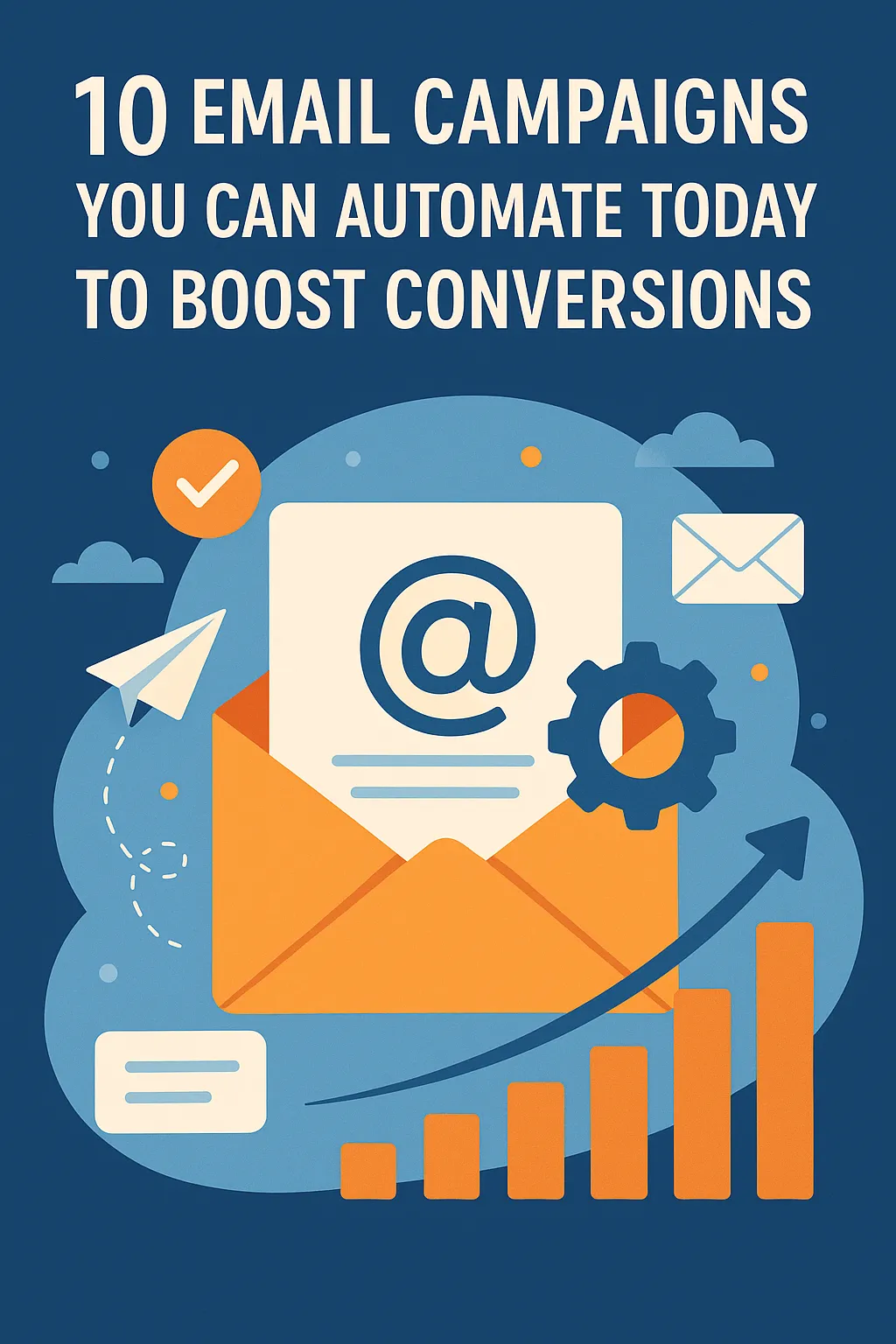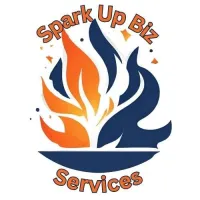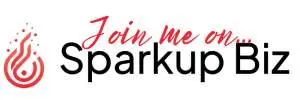Our Latest Articles

10 Email Campaigns You Can Automate Today
Automating your email marketing campaigns can feel like discovering a hidden cheat code for sustained business growth. By leveraging automation, you maintain continuous, meaningful communication with your audience—without manually crafting and dispatching every message. Beyond the obvious time savings, email automation empowers you to deliver highly personalized experiences, uphold brand consistency, and drive significantly higher revenue.
In an era where consumers expect messages that are not only timely but also tailored to their unique behaviors and preferences, generic blasts no longer cut it. Automation bridges that gap, allowing businesses of all sizes—from scrappy startups to established enterprises—to meet and exceed these elevated expectations without the need for an oversized marketing team or a labyrinthine tech stack.
Below, we’ll explore why email automation has become indispensable, dive deep into ten essential automated campaigns you can deploy immediately, and offer strategic insights, best practices, and optimization tips to ensure you extract the maximum ROI from each campaign. By the end of this guide, you’ll have a robust blueprint for building an email-driven engine that nurtures leads, delights customers, and fuels sustainable growth.
Why Email Automation Matters More Than Ever
1. The Multi-Channel Noise
Today’s consumers are bombarded with marketing messages across email, social media, search, and more. Research shows the average person receives over 120 emails per day, not to mention notifications from apps, SMS, and push channels. In this cacophony, generic emails blend into the background noise. Automation allows you to slice through the clutter by sending precisely the right message at the right moment—be that a timely welcome, a helpful tip, or a cart abandonment reminder.
2. Scale Meets Relevance
Manual email campaigns can handle dozens or maybe hundreds of contacts, but scaling to tens or hundreds of thousands without sacrificing personalization is virtually impossible. Automation platforms empower you to design workflows triggered by behaviors (e.g., first site visit, cart addition, purchase), demographic data, or engagement metrics. This ensures every subscriber receives a contextually relevant message, increasing engagement and conversions.
3. Data-Driven Nurturing
Automation isn’t just about sending more emails—it’s about sending better ones. Modern ESPs (Email Service Providers) collect and analyze user interactions—opens, clicks, site behavior—to continually refine and optimize your messaging. You can A/B test subject lines, content blocks, and send times, then automatically route users into different branches of a workflow based on their responses. This iterative, data-driven approach leads to steadily improving performance.
4. ROI You Can’t Ignore
Multiple industry studies consistently show email marketing delivers an average ROI of $36 for every $1 spent. When combined with automation—which boosts open rates, click-through rates, and conversions by delivering messages at peak relevance—the returns can be even more staggering. Forrester Research reports that companies excelling at lead nurturing through automation generate 50% more sales-ready leads at 33% lower cost. Automation isn’t a luxury; it’s a competitive necessity.

1. Welcome Email Series
Why It Matters
Your welcome series is often the first substantial interaction between your brand and a new subscriber. Data shows welcome emails achieve average open rates exceeding 80%—more than double the typical campaign. Capitalizing on this attention window builds trust, sets expectations, and drives early engagement.
Sequence Blueprint
Email 1 (Immediate):
Content: Thank subscribers for joining, introduce your brand’s mission and values.
Tone: Warm, appreciative, and authentic.
CTA: Encourage following social channels or whitelisting your email address.
Email 2 (Day 1–2):
Content: Share your top-performing blog posts, customer stories, or flagship product highlights.
Tone: Educational, helpful, and informative.
CTA: Invite them to explore deeper resources or a product demo.
Email 3 (Day 3–5):
Content: Present a special offer or incentive (discount, free trial, bonus content).
Tone: Value-driven, with a clear sense of urgency.
CTA: Direct link to redeem the offer.
Best Practices
Personalize with the subscriber’s name and, if available, segmentation data (e.g., interests, industry).
Optimize subject lines to pique curiosity or highlight a key benefit.
Use a clean, mobile-responsive template.
Include a clear, singular CTA per email.
Monitor conversion metrics and tweak timing or content elements quarterly.
2. Abandoned Cart Recovery Emails
The Opportunity
Cart abandonment rates hover between 60–80% across eCommerce sectors. Automated recovery emails can reclaim up to 30% of those lost sales—transforming “almost customers” into buyers.
Three-Part Sequence
Email 1 (1 Hour Post-Abandonment):
Subject: “Did Something Go Wrong?”
Content: Friendly reminder, list of abandoned items, direct “Return to Cart” link.
Email 2 (24 Hours):
Subject: “Still Thinking It Over?”
Content: Highlight product benefits, include a customer testimonial or review.
Email 3 (48–72 Hours):
Subject: “Last Chance: Your Cart Is Expiring”
Content: Urgency-driven messaging—low stock alerts or a small discount (e.g., 10% off).
Key Elements
Prominent product images and descriptions.
One-click buttons that route directly back to the cart.
Dynamic personalization (e.g., “Hi [Name], your [Product Name] is waiting!”).
Mobile-optimized layout (most cart emails are opened on smartphones).
3. Post-Purchase Follow-Ups
Capitalizing on Recent Purchases
Customers who have just bought from you are at peak engagement and trust levels. A well-designed post-purchase sequence can increase repeat purchase rates, cross-sell complementary items, and cultivate brand loyalty.
Recommended Flow
Order Confirmation (Immediate):
Content: Clear summary of items purchased, delivery details, customer support contacts.
Tone: Informative and reassuring.
Usage Tips (3–5 Days Post-Delivery):
Content: Guides, tutorials, or how-to videos showing best practices.
Tone: Helpful and supportive.
Cross-Sell Offer (7–10 Days):
Content: Products that pair well with the original purchase, bundled offers.
Tone: Suggestive rather than pushy.
Review Request (14–21 Days):
Content: Invitation to share feedback or a product review.
Incentive: Small discount or loyalty points for completing the review.

Tips for Success
Use dynamic content blocks to tailor recommendations based on actual purchase.
Keep emails succinct—focus each message on a single objective.
Leverage social proof (customer photos, ratings) to boost credibility.
Integrate seamlessly with your support and review platforms to automate feedback collection.
4. Re-engagement or Win-Back Campaigns
The Challenge of Dormant Subscribers
Even the healthiest lists accumulate inactive contacts. Re-engagement campaigns help you rekindle interest, clean your list, and ultimately improve deliverability.
Sample Win-Back Workflow
Trigger: No opens or clicks in 60 days.
Email 1: “We Miss You, [Name]!”—gentle check-in asking if they’re still interested.
Email 2: Highlight what they’ve missed—top content or product updates.
Email 3: Offer a special incentive to re-subscribe or make a purchase.
Email 4: “Last Chance to Stay Subscribed” with a one-click opt-in confirmation; unsubscribes proceed automatically otherwise.
Metrics to Watch
Reactivation rate (contacts who engage after the sequence).
Unsubscribe rate (should spike minimally—healthy pruning is positive).
Spam complaints (should remain near zero).
5. Lead Magnet Delivery and Nurture Series
Converting Clicks into Conversations
Lead magnets—guides, checklists, templates, or mini-courses—are powerful acquisition tools. But the real value lies in the follow-up nurture series that guides prospects toward a purchase decision.
Nurture Sequence Structure
Delivery Email (Immediate):
Link to download the lead magnet.
Personal thank-you and brief overview of what’s included.
Educational Email (Day 2–3):
Expanded insights or a related tip that wasn’t in the freebie.
CTA: Visit blog post or video for deeper understanding.
Case Study Email (Day 5):
Real-world example showcasing how your solution solved a problem.
CTA: Schedule a demo or free consultation.
Soft Pitch (Day 7):
Introduce a low-commitment paid offer (e.g., a webinar or mini-course).
Emphasize transformation, not just features.
Best Practices
Align the nurture content tightly with the promise of the lead magnet.
Keep each email focused on a single lesson or insight.
Use storytelling to illustrate value, making the journey relatable.
Include social proof—quotes, testimonials, or data points—to establish credibility.

6. Event or Webinar Reminder Campaigns
Maximizing Attendance
Webinars and virtual events often suffer from low attendance rates—sometimes as low as 35%. A well-crafted reminder sequence can boost show-up rates by up to 20%.
Reminder Cadence
Registration Confirmation:
Event details, calendar invite link, and what to expect.
1 Week Before:
Tease a key insight or speaker highlight to build anticipation.
1 Day Before:
Clear schedule, login instructions, and any preparatory resources.
1 Hour Before:
Immediate “See you soon!” with direct link to join.
Post-Event Follow-Up:
Link to replay, slides, and a special offer or next step.
Engagement Tips
Personalize subject lines (e.g., “Can’t wait to see you, [Name]!”).
Incorporate urgency and social proof (e.g., “1000+ registered!”).
Provide value in each reminder—share a tip, resource, or speaker quote.
Use straightforward “Join Now” buttons that stand out on mobile.
7. Customer Feedback & Review Requests
Building Social Proof
Automated review requests multiply your opportunity to gather testimonials. When integrated into your post-purchase flow, they make feedback a natural next step.
Effective Request Timing
Digital products/software: 3–5 days post-purchase.
Physical goods: 7–14 days post-delivery to allow for use.
Template Structure
Friendly Check-In: “How’s your experience with [Product Name] so far?”
Direct Request: “Would you mind leaving a quick review?”
Incentive (Optional): “Here’s 10% off your next order as a thank-you.”
One-Click Path: Button linking straight to your review platform.
Integration Strategies
Sync with platforms like Yotpo, Trustpilot, or Google Reviews.
Auto-populate review forms with product details to reduce friction.
Segment based on satisfaction data (e.g., NPS) to request testimonials from promoters and feedback from detractors.
8. Product Recommendation Emails
Personalized Upsells and Cross-Sells
Recommendation engines drive 35% of Amazon’s revenue; smaller players can achieve similar lift by automating dynamic product suggestions.
Recommendation Types
Cross-sells: “Customers who bought X also bought Y.”
Upsells: “Upgrade to [Higher-Tier Product] for more…”
Browse Abandonment: “Still looking? Here are items you viewed.”
Trending Products: “Our top picks this week for you.”
Implementation Tips
Leverage your ESP’s integration with your eCommerce platform or CRM for real-time data.
Include concise, benefit-driven copy under each product thumbnail.
A/B test layout—grid vs. single-product focus.
Monitor click-to-purchase rates and adjust recommendation logic periodically.
9. Birthday and Anniversary Emails
Celebrating Milestones
These highly personalized gestures can generate open rates above 50% and click-through rates that significantly surpass standard campaigns.
Campaign Ideas
Birthday: Send a celebratory discount or free gift with minimum spend.
Anniversary of Signup/Purchase: Offer a loyalty bonus or exclusive content.
Customer Loyalty Levels: Recognize tier progression with tailored rewards.
Crafting the Message
Use festive imagery (balloons, confetti) but keep layout clean.
Make the offer time-bound to spur immediate action (e.g., valid for 7 days).
Include a heartfelt message—avoid sounding generic.

10. Onboarding Sequences for SaaS or Memberships
Reducing Time-to-Value
Effective onboarding emails guide new users from signup to “aha!” moment—the point where they clearly see your solution’s value. This dramatically improves retention and reduces churn.
Sample Flow
Day 0 (Welcome):
Login link, support resources, community invites.
Day 1:
Quick-start guide or video tutorial on core feature.
Day 3:
Advanced tip or secondary feature highlight.
Day 5:
Case study of a power user or customer success story.
Day 7–14:
Invite to a live Q&A or webinar for deeper learning.
Day 14+:
Upgrade prompt or tailored plan recommendation based on usage data.
Measurement & Optimization
Track activation rate (percentage hitting core milestones).
Monitor feature usage within defined time windows.
Survey new users at Day 7 to gather qualitative feedback.
Iterate on sequence timing and content based on cohort analysis.
What You Need to Set Up Automation
Email Service Provider (ESP): Choose a platform with robust automation workflows. Popular options include:
ConvertKit: User-friendly with powerful tagging.
MailerLite: Affordable, with visual workflow builder.
ActiveCampaign: Advanced segmentation and CRM features.
Customer Data Infrastructure: Ensure seamless integration between your website, CRM, and ESP. Utilize tags, custom fields, and event tracking to trigger workflows accurately.
Defined Customer Journey Map: Diagram each stage—awareness, consideration, purchase, retention—and align automated campaigns to these phases.
Segmentation Rules: Classify subscribers by interests, purchase frequency, demographics, and engagement levels to deliver hyper-relevant content.
Performance Dashboard: Monitor open rates, click-through rates, conversion rates, revenue per email, and list growth metrics. Regularly analyze and benchmark against industry standards.
Avoid These Common Automation Pitfalls
“Set It and Forget It” Syndrome
Automation excels when campaigns evolve alongside your audience. Schedule quarterly audits to refresh content, update offers, and refine triggers.Surface-Level Personalization
Inserting a name isn’t enough. Leverage behavioral data—past purchases, content downloads, browsing patterns—to inform email copy and product suggestions.Ignoring Deliverability Metrics
High bounce rates, spam complaints, and low engagement can tank your sender reputation. Monitor inbox placement, maintain list hygiene, and adhere to best practices (e.g., double opt-in).Overlapping Workflows
Conflicting automations can confuse or overwhelm subscribers. Use exclusion rules—most ESPs allow you to prevent simultaneous enrollment in multiple sequences.Neglecting Mobile Optimization
Over 50% of emails are opened on mobile devices. Always preview templates on various screen sizes and keep CTA buttons large and finger-friendly.
Advanced Tips for Next-Level Automation
Predictive Email Triggering
Use machine-learning features offered by some ESPs to predict churn risk or purchase propensity, then automate targeted retention or conversion campaigns.Dynamic Content Blocks
Create email templates where specific sections change based on user segments—showing different products, headlines, or offers within one campaign.SMS and Push Integrations
Expand beyond email by syncing with SMS or push notification platforms. For instance, follow up a cart abandonment email with an SMS reminder 24 hours later.Behavioral Lead Scoring
Assign points for key actions (opens, clicks, demos booked) and automatically alert your sales team when a lead crosses a threshold.Geo-Targeted Campaigns
Trigger emails based on location data—celebrate local events, adjust messaging for regional promotions, or send weather-related content (e.g., “Stay dry this rainy weekend” with an umbrella discount).
Final Thoughts
These ten automated email campaigns form the backbone of a high-performance marketing engine. Built and optimized correctly, they can:
Generate consistent lead flow.
Nurture prospects into loyal customers.
Recover millions of dollars in abandoned revenue.
Deliver personalized experiences at scale.
Automation isn’t “nice to have”—it’s table stakes in today’s competitive landscape. Start by prioritizing the sequences that align closest with your immediate business goals. Track performance relentlessly, learn from your data, and iterate. Over time, your email ecosystem will evolve into a self-sustaining growth engine, freeing you to focus on strategy and innovation.
Whether you’re launching your first welcome series or refining a complex, multi-channel orchestration, the principles remain the same: relevance, timing, and value. Embrace automation with intention, and watch your engagement soar, your revenue climb, and your customers fall in love with the seamless experiences you deliver—again and again.
Ready to go to the next level?
If you're looking for a CRM with the tools to do automations like this? And couldn't afford them in the past? Contact us for a demonstration of our SwingSwing CRM. You'll be amazed at the number of features available at an affordable rate for small businesses! https://sparkupbizservices.com


